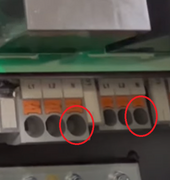The inverter can't be a source and load, at the same time.
The inverter can be a load to the grid and a source to the backup panel at the same time.
This is such a basic thing that it is freaking me out you aren't seeing that.
Maybe you are doing some magic semantic handwave that a device with TWO 240 VAC connections is somehow ONE circuit. I just don't see any justification for that interpretation.
There are times the grid port will load more power than the load port puts out (say grid charging battery). There will be times the grid port is loaded less than the load port (say some PV or battery but not enough to power all the backup, deficit from grid). And hopefully, commonly, the grid port will source power while the load port also sources power (excess PV input). The grid and load connections can go basically all over the place power wise.
The inverter can and *must* be able to operate as a source and a load at the same time. This is fundamental to its operation.
Correct, but it's still one circuit from one source.
No, it is two, grid and load.
It's not two circuits. It's two optional sources for one circuit.
The interlocks keep them from being used simultaneously.
There is no interlock on grid and load to the inverter. They both operate at the same time.
There is no interlock that prevents the inverter from using the grid connection while the backup panel uses the grid.
Thus the shared neutral in those connections crosses two circuits.
The only interlock is the backup panel can be powered from the main panel or from the inverter load output. That is the only interlock in the system.
Most of the newer hybrid AIO's have a single neutral bar.
Your should be internally common. (Please verify)
It probably is, would be odd to be otherwise.
You have two options.
1. Only use the input neutral terminal. (Assuming that it's the larger one)
2. Run both to the terminal block in the trough.
(#1 would be my choice)
#1 violates the wiring diagrams in the inverter manual. They always show the load neutral connection being used. Not following the manual violates the certifications.
#2 creates a neutral which has a loop. The loop is closed at the inverter with the grid neutral and load neutral are assumed to be internally connected.
Hopefully this cleared up some questions.
Not really. I'm far more confused now than when we started because I don't actually understand what you think is the right connections and/or what you are telling me violates code, the manual, or both.
Mike C.



